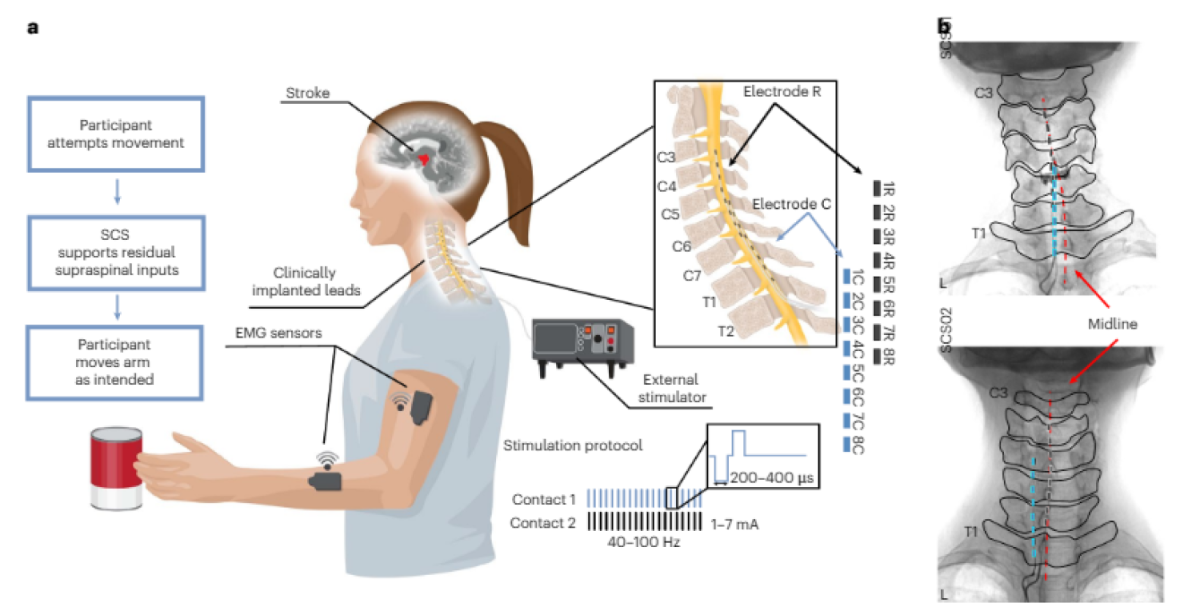Strokes are a significant health concern worldwide. According to the World Health Organization (WHO), stroke is the second leading cause of death and the third leading cause of disability worldwide. Every year, over 15 million people worldwide suffer a stroke. A stroke can have a significant impact on the central nervous system function. When a stroke occurs, blood flow to a part of the brain is disrupted, causing that part of the brain to become damaged or die.
The specific effects of a stroke depend on where in the brain the damage occurs, but common symptoms, all of which have a large detrimental effect on the ability to perform activities of daily living, include:
-
Weakness or paralysis on one side of the body: If the damage is on one side of the brain, it can affect the opposite side of the body. This can make it difficult to move or control certain muscles.
-
Sensory disturbances: A stroke can cause numbness, tingling, or loss of sensation in parts of the body. This can affect the ability to feel touch or temperature.
-
Speech and language difficulties: Damage to the areas of the brain that control speech and language can make it difficult to communicate or understand language.
-
Cognitive changes: A stroke can cause changes in memory, thinking, and overall cognitive function.
After suffering a cerebral stroke, it can disrupt descending commands from motor cortical areas to the spinal cord, which can result in permanent motor deficits of the arm and hand. However, below the lesion, the spinal circuits that control movement remain intact and could be targeted by neurotechnologies to restore movement.
NEW: Spinal cord stimulation can instantly improve arm mobility for people affected by moderate to severe #stroke, report researchers from @PittTweet and @CarnegieMellon today in @NatureMedicine. @MCapogrosso @ElviraPirondini @dougweberlab
— UPMC (@UPMCnews) February 20, 2023
➡️ https://t.co/udc6FEsSUS pic.twitter.com/nikRMa0hCr
Electromyography (EMG) technologies have regularly been used with stroke rehabilitation as a feedback tool to offer quantification on muscle performance. EMG presents a valuable modality to be able to assess and improve muscle function, coordination, and control.
Researchers from the University of Pittsburgh and Carnegie Mellon University recently have applied a new technique of employing a neurotechnology that stimulates the spinal cord and instantly improves arm and hand mobility, enabling people affected by moderate to severe stroke to conduct their normal daily activities more easily. The improvements in the participant’s abilities to perform tasks through coordinated and controlled contractions of the targeted muscles were measured through the use of the Delsys Trigno EMG system.
Over the course of 29 days, 2 participants were implanted for with two linear leads in the dorsolateral epidural space targeting spinal roots C3 to T1 to increase excitation of arm and hand motoneurons. The research and evidence from the two participants, in a first-in-human study, is a novel approach to using electrical stimulation of cervical spinal circuits to facilitate arm and hand motor control in chronic post-stroke hemiparesis
Results showed that a continuous stimulation through the targeted approach on the specific areas of the spinal cord was able to improve overall strength (for example, grip force +40% for the first participant (SCS01); +108% for the second participant (SCS02)), joint kinematics (an increase of between 30% to 40% of speed), and functional movements. This was a huge step for the participants and enabled both to be able to perform movements that they previously were not able to without the application of the spinal cord stimulation.
The EMG data was further used to assess the control and synergistic behaviours of muscles when perform functional tasks. During elbow extension, when applying the direct stimulation, improvements in functional performance were attributed to facilitation of elbow muscle activity and changes within the synergistic contributions of the flexors and extensors. Without the stimulation applied, shoulder muscle EMG activity indicated a compensatory mechanism to allow for the elbow to passively extend, however with the application of the stimulation, no compensatory strategy was seen.
Whilst both participants saw an increase in functional capabilities immediately during the stimulations, they equally were able to maintain some of the improvements even without the stimulation. Importantly, no adverse effects or events were reported during the trials.
While the study cannot fully evaluate the safety and efficacy from just the two participants, the data, although still only being from a preliminary study, provides evidence that spinal cord stimulation could be an assistive as well as a restorative approach for upper-limb recovery after stroke.
Paper reference and graphics reproduced from: Powell, M.P., Verma, N., Sorensen, E. et al. Epidural stimulation of the cervical spinal cord for post-stroke upper-limb paresis. Nat Med 29, 689–699 (2023). https://doi.org/10.1038/s41591-022-02202-6


